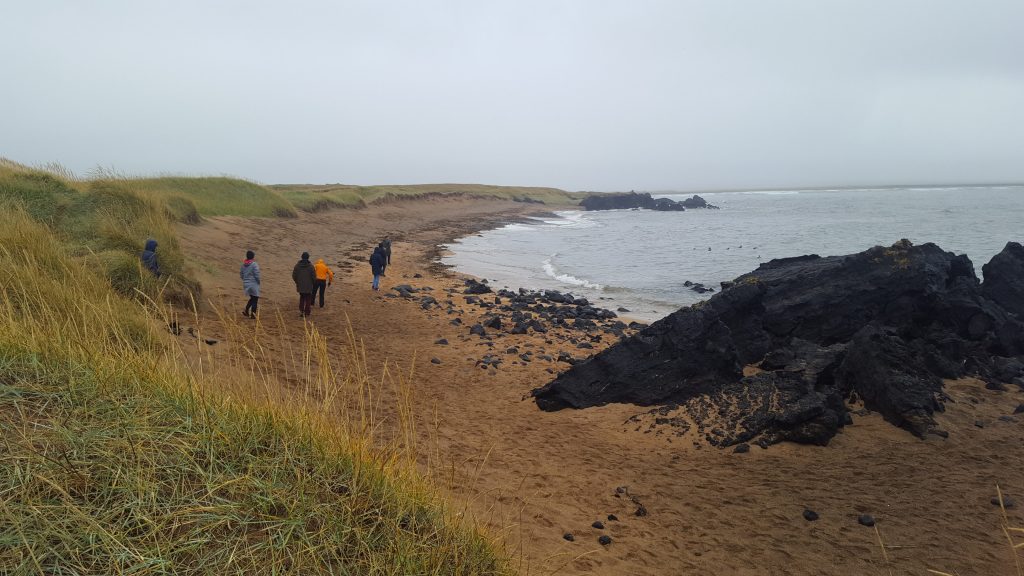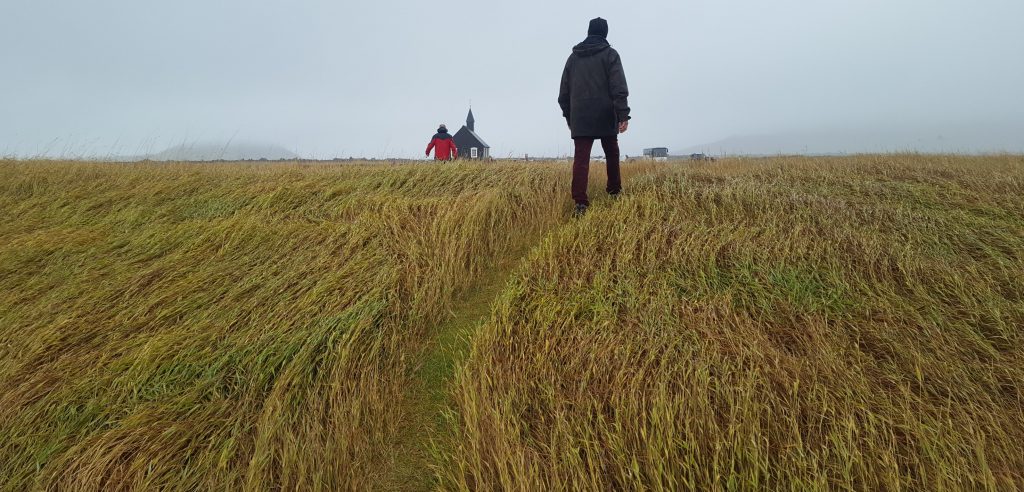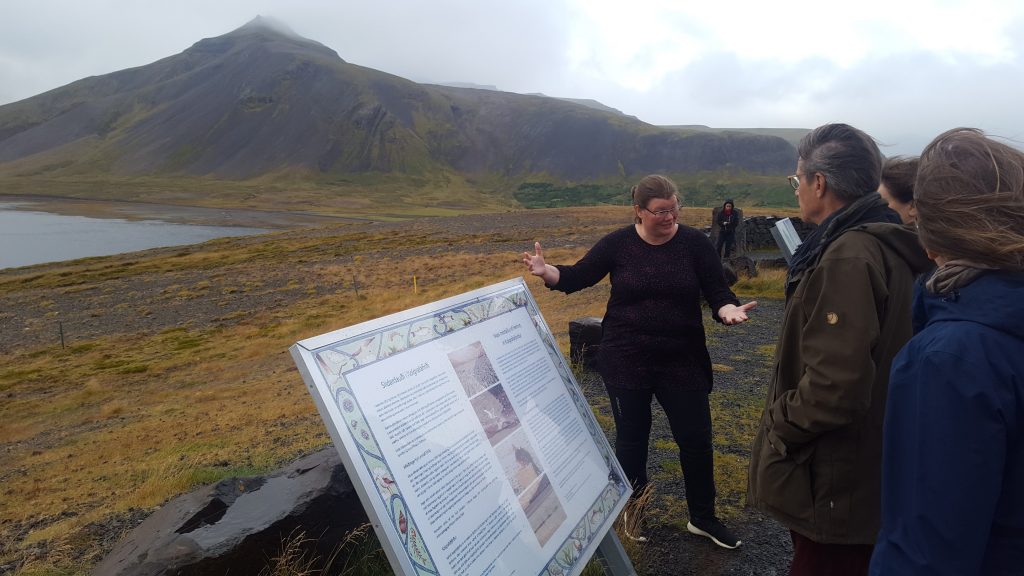
Learning Journey Snæfellsnes. Copyright: Kjartan Bollason.
The SHAPE learning journeys have not only been valuable for the visitors. As important have been the feedback given to the local hosts on their tourism developments. In the regional park of Snæfellsnes in Iceland the visitors got a broad introduction to the various tourism ventures leading to engaged discussions about what works – and what does not work.
By: Arne Abrahamsen, Editor SHAPE Newsletter
The participants in the learning journey to Iceland got the royal treatment in the
regional park of Snæfellsnes. They travelled along the 90 km long peninsula visiting small towns and villages and experiencing some of the natural wonders of the area. Snæfellsnes, which markets itself as “Iceland in a Nutshell”, have about 4000 inhabitants but have more than 700 000 visitors each year. That is quite a challenge.
A new visitor center and a coastline trail
As part of the SHAPE project Snæfellsnes have developed both a new visitor center and a coastal trail along which visitors can experience many of the highlights of the area. Trying to describe the importance of the learning journey, Ragnhildur Sigurðardóttir uses the old islandic in “Glöggt er gests augað”, which means that visitors often see things that we the locals do not notice any more or take forgranted. – The learning journey gave us an opportunity to mirror our work with both of these projects, says Ragnhildur. – The exchanges of knowledge and our Nordic partners guest view gave us useful feedback, ideas and inspiration, she adds.

Learning Journey Snæfellsnes. Copyright: Kjartan Bollason.
Coping with escalating number of visitors
An important learning point for the participants on the trip was how to cope when the number of visitors escalate as they have done in Snæfellsnes. – We of course want both to welcome and inform our visitors. That have had logistical challenges as well as challenges when it comes to the interaction between the tourists and the locals, Ragnhildur explains. – We have worked hard with the people in the area in order to make them accept and welcome the tourists, and we have to ensure that the interests of the locals are taken care of and their values respected, she says.
They must have done something right. Because Snaefellsnes Peninsula were the first in Europe to receive certification from EarthCheck, an international benchmarking system for sustainable travel and tourism. The municipalities have established a shared sustainability policy for Snæfellsnes, last signed March 10th 2017. The policy states that the municipalities are resolved to:
- Work on continuous improvements in their own performance in environmental, economic and community issues, taking into account EarthCheck reference reports for the area.
- Ensure that the local labor force, goods and services enjoy priority.
Guests in the area are encouraged to lend the municipalities a hand and support the project by taking the environment and community into account in all respects in their travels in the area.

Ragnhildur presenting Snæfellsnes. Copyright: Kjartan Bollason.
SHAPE is a three-year Northern Periphery and Arctic Programme (NPA) project promoting the development of ecotourism initiatives. Follow us on Facebook or Twitter


